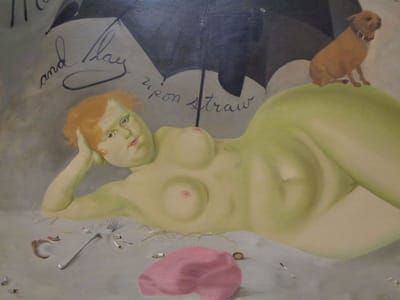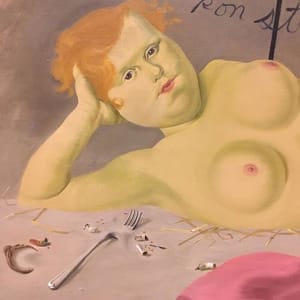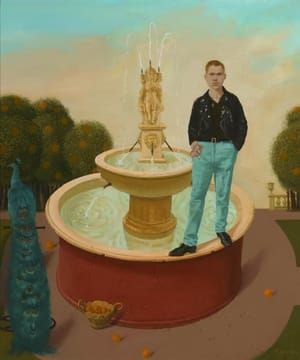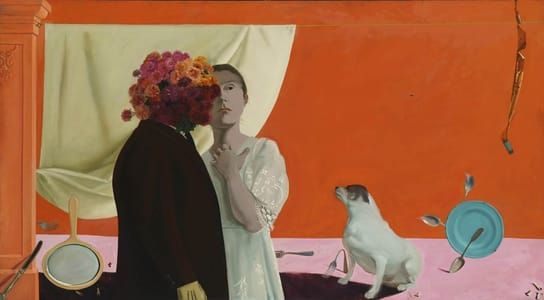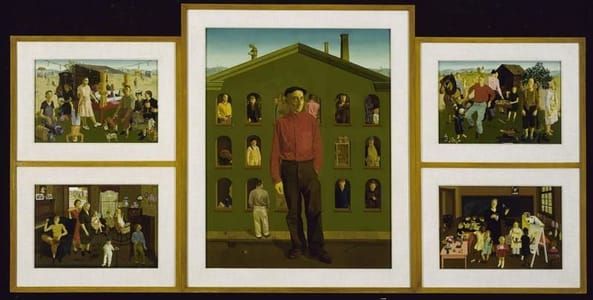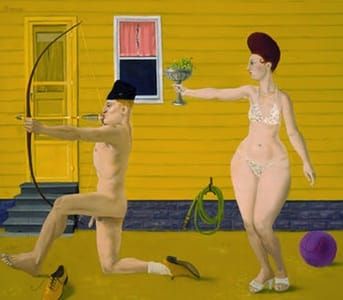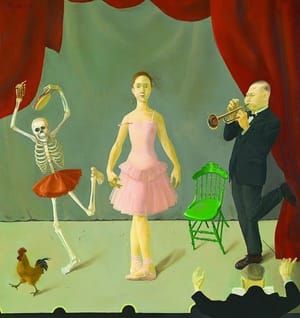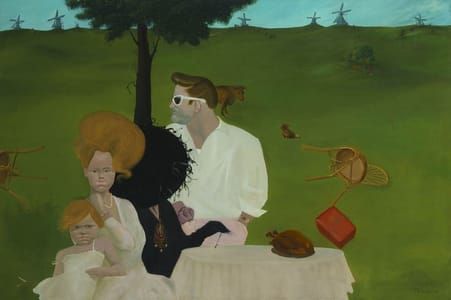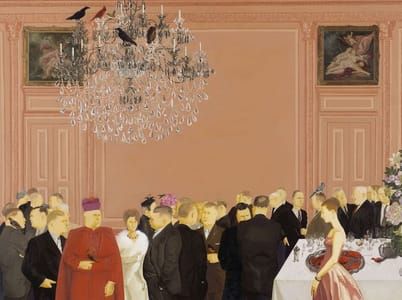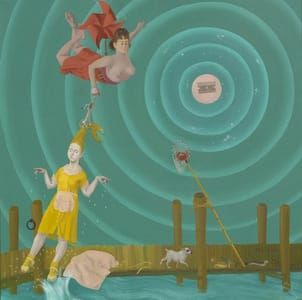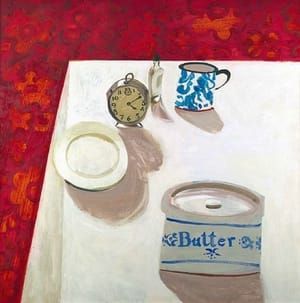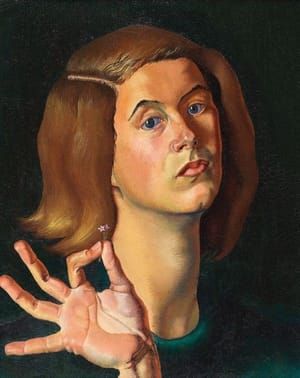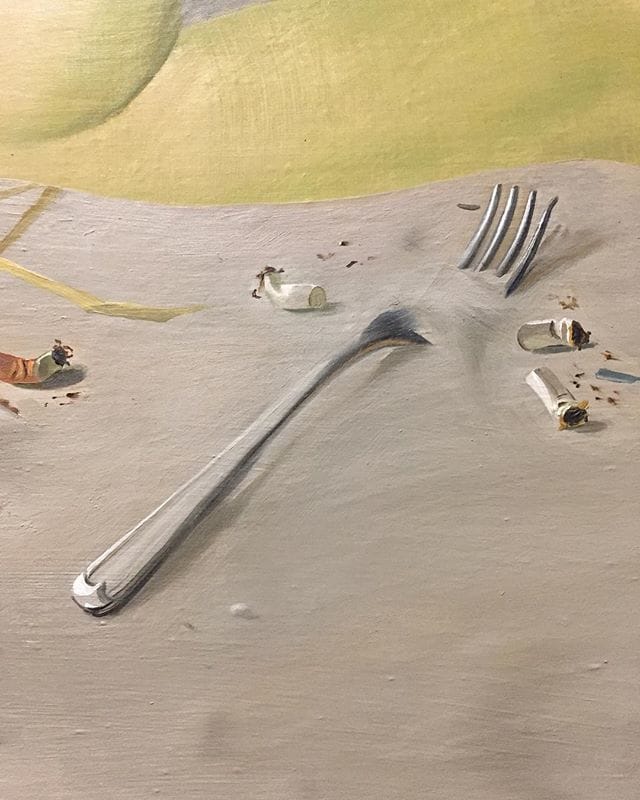

Margery Daw, 1969
Honoré Sharrer
This image relates to the Mother Goose rhyme in ‘See Saw Margery Daw’. The rhyme is a chant of children shaming Margery Daw for her slovenliness and laziness.
The artist has Margery Daw very comfortable and liberated from anyone’s opinion of her. With her dog on guard.
A primary concern of Sharrer was how to deal with what the appearances of things and of people hide. She said: “There are things going on other than what you see. What the eye sees is a kind of realism, but it isn’t everything.”
The curators of an exhibition of Honoré Sharrer’s paintings at the Pennsylvania Academy of The Fine Arts in Philadelphia (‘Subversion and Surrealism in the Art of Honoré Sharrer‘, Summer 2017) suggest that the artist’s work can be described more as ‘psychic realism’ than ‘hyperrealism’.
The artist uses a number of techniques to bend our eyes and our minds to fathoming out what is being hidden behind what we see.
(This, of course, being a vast subject which feeds into the way our societies, our social orders, our forms of domination and oppression and suppression are constructed).
There are unusual colors and color combinations; there is the flatness of the images as though to emphasize a didactic rather than a representational purpose. As subject matter, the artist presents stories which we think we know: myths, scriptural stories and nursery rhymes. She makes use of press reports.
She distributes objects, all of which are domestic and familiar, in a haphazard way to make some of them vulnerable for breakage or spoilage. Some of them are bent and some discarded. Mirrors, that instrument of our self-delusions, appear in two of these paintings.
Her dogs act as though they are cats: knowing, insouciant and autonomous. Commenting on the goings-on.
Our curiosity is tweaked: we look and look to see if we are seeing completely what the artist shows and suggests.
The artist focuses on suffering in war, the status and freedom of women, and the complexities of the lives of the working class and their unequal access to the cultural goodies.
The artist referred to her naked, satisfyingly-sized women as ‘liberated’. It tends to be the clothed women, no matter how skimpy their clothing, who are not free, autonomous human beings.
One wonders what this humane and thoughtful artist would have done with our world today in which the virtual has become more real than reality; and very addictive. And what is hidden has been deliberately hidden by the artists and business people of the screen.
The virtual is not, of course, not real. It is real. The construction of virtual time began, perhaps, with the invention of the steam engine (or is it with the Gutenberg Bible in 1455?) and is now continuing apace with our use of and dependence on screens of all kinds and sizes for all kinds of purposes.
Virtual reality has taken our psyches over.
And we can say – in spades – about virtual reality what the artist said about reality:
“There are things going on other than what you see. What the eye sees is a kind of realism, but it isn’t everything.”
Collection of the artist’s family.
[https://vindevie.me/2017/08/29/honore-sharrer/]
Uploaded on Dec 16, 2017 by Suzan Hamer
Honoré Sharrer
artistArthur
Wait what?

